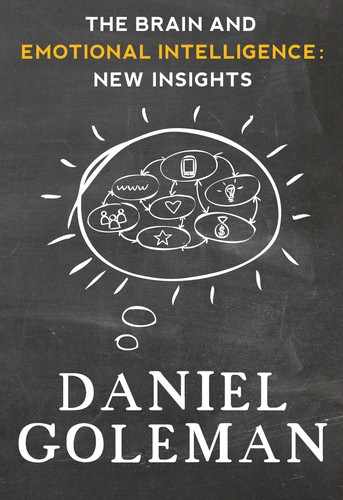Is Emotional Intelligence a Distinct Set of Abilities?
This is the first big question: Is emotional intelligence distinct from IQ?
I first got an inkling that perhaps IQ alone did not explain all of career success during my freshman year in college. There was a guy down the hall from me in the dormitory who had perfect scores on his SATs, plus perfect scores on five advanced placement tests. From an academic point of view, he was brilliant. But he had a problem: zero motivation. He never got to class, he slept ‘till noon, never finished his assignments. It took him eight years to get his bachelors and today he's self-employed as a consultant. He’s not a star performer, he's not the head of a big organization, he's not an outstanding leader. I now see he lacked some crucial emotional intelligence abilities, particularly self-mastery.
Howard Gardner, a friend from my days in grad school, opened up the conversation about different kinds of intelligence beyond IQ when he wrote about multiple intelligences in the 1980s4. Howard’s argument was that for an intelligence to be recognized as a distinct set of capacities there has to be a unique underlying set of brain areas that govern and regulate that intelligence.
Now brain researchers have identified distinct circuitry for emotional intelligence in a landmark study by another old friend, Reuven Bar-on (by some unlikely coincidence, his mother was my fourth grade Sunday school teacher). Bar-On worked with one of today’s outstanding brain research groups, headed by Antonio Damasio at the University of Iowa medical school5. They used the gold standard method in neuropsychology for identifying the brain areas associated with specific behaviors and mental functions: lesion studies. That is, they studied patients who have brain injuries in clearly defined areas, correlating the site of the injury with the resulting specific diminished or lost capacities in the patient. On the basis of this tried-and-true methodology in neurology, Bar-on and his associates identified several brain areas crucial for the abilities of emotional and social intelligence.
The Bar-On study is one of the more convincing proofs that emotional intelligence resides in brain areas distinct from those for IQ. Other findings using different methods support the same conclusion6. Taken together, this data tells us there are unique brain centers that govern emotional intelligence, which distinguishes this set of human skills from academic (that is, verbal, math, and spatial) intelligence – or IQ, as these purely cognitive skills are known – as well as from personality traits.


The right amygdala (we have two, one in each brain hemisphere) is a neural hub for emotion located in the midbrain. In Emotional Intelligence I wrote about Joseph LeDoux’s landmark research on the role of the amygdala in our emotional reactions and memories. Patients with lesions or other injuries to the right amygdala, the Bar-On study found, showed a loss in emotional self-awareness – the ability to be aware of and understand our own feelings.

Another area crucial for emotional intelligence is also on the right side of the brain. It’s the right somatosensory cortex; injury here also creates a deficiency in self-awareness, as well as in empathy – awareness of emotions in other people. The ability to understand and feel our own emotions is critical for understanding and empathizing with the emotions of others. Empathy also depends on another structure in the right hemisphere, the insula, a node for brain circuitry that senses our entire bodily state and tells us how we're feeling. Tuning in to how we're feeling ourselves plays a central role in how we sense and understand what someone else is feeling.

Another critical area is the anterior cingulate, located at the front of a band of brain fibers that surround the corpus callosum, which ties together the two halves of the brain. The anterior cingulate is an area that manages impulse control, the ability to handle our emotions, particularly distressing emotions, and strong feelings.

Finally, there's the ventral medial strip of the prefrontal cortex. The prefrontal cortex is just behind the forehead, and is the last part of the brain to become fully grown. This is the brain’s executive center; here reside the abilities to solve personal and interpersonal problems, to manage our impulses, to express our feelings effectively, and to relate well with others.
